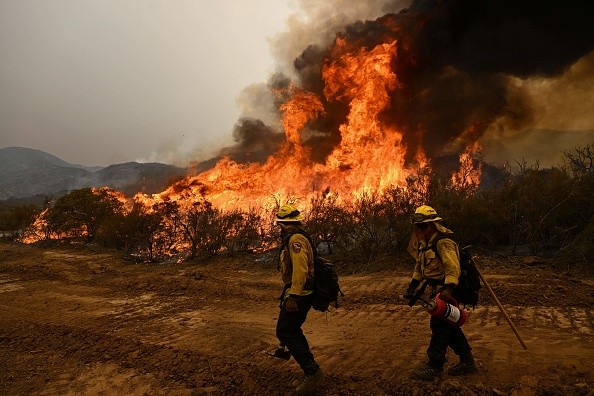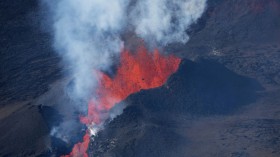Experts raised concerns over the rising global temperatures as La Niña ends this year. The weather report added that extreme temperatures and intense heat waves could be expected in 2024 due to the El Niño phenomenon.
The human-caused climate change and greenhouse gas emissions have been the primary concern due to their impact on the environment, weather patterns and temperatures.
While climate change is a big issue, the effect of La Niña helped to bring cooler temperatures, meaning that it could be hotter when La Niña ends.
La Niña expected to end this year

Fairview Fire near Hemet, California, on September 8, 2022.
The recent BBC report added that the temperatures this year are expected to warm as the La Niña will end in 2023. The rising global temperatures are problematic to many countries that are not used to extreme weather events.
Meanwhile, the Guardian explained that El Niño would play a significant role next year for the off-chart to extreme temperatures, adding concerns about climate change and global warming climate crisis.
The report recently added that Europe's countries had the warmest beginning of January. Meanwhile, Spain recorded the hottest in 2022 with unseasonably warm weather conditions.
Nature World News reported that the warm temperatures in Europe would stay until January. Many European ski businesses decided to close due to the lack of snow temporarily.
The impact of the El Niño phenomenon could bring temperatures up to 1.5C, which could result in intense heat globally. In addition, continuous greenhouse emissions would also contribute to the problem.
According to the Guardian, Professor Adam Scaife from the Met Office explained that it could be possible that temperatures could reach over 1.5C, as El Niño could unfold extreme heat and heat waves.
Professor Scaife added the importance of disaster preparedness and emergency services, especially since extreme temperatures could affect plants and animals.
On the other hand, the report explained that the effect of El Niño would be felt in 2024, adding that the phenomena could affect the weather conditions that could result in powerful storms or extreme weather events.
Impact on the environment
According to the National Ocean Service, El Niño emerges more frequently than La Niña. Bringing warmer conditions, El Niño could impact aquatic animals on Pacific coasts, especially the phytoplankton and fish.
Meanwhile, warmer temperatures and climate change both damage coral reef systems. The significant impact on corals could affect the marine biodiversity that depends on their existence.
In Antarctica, the population of rare Emperor Penguins is under threat due to global heating. Many animals are sensitive to the warming of temperatures, especially extreme temperatures.
In the previous news, Nature World News reported that the warming of sea temperatures had greatly affected the northern Gannets on the Quebec isle. Gannets have to fly farther to look for find as marine heatwaves become challenging for their population.
The impact of the warming of temperatures has been significant and concerning. As reported, El Niño could contribute and bring more extreme heat waves.
Related Article: From Warming Events to Extreme Storms: How Can El Niño and La Niña Impact Weather Conditions?
For more similar stories, don't forget to follow Nature World News.
© 2024 NatureWorldNews.com All rights reserved. Do not reproduce without permission.





